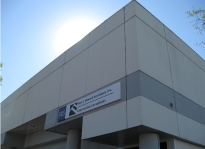California Builders Right To Repair Current Law Summary:
Current Law Summary: SB800 (codified as Civil Code §§895, et seq) is the most far-reaching, complex law regulating construction defect litigation, right to repair, warranty obligations and maintenance requirements transference in the country. In essence, to afford protection against frivolous lawsuits, builders shall do all the following:A homeowner is obligated to follow all reasonable maintenance obligations and schedules communicated in writing to the homeowner by the builder and product manufacturers, as well as commonly accepted maintenance practices. A failure by a homeowner to follow these obligations, schedules, and practices may subject the homeowner to the affirmative defenses.A builder, under the principles of comparative fault pertaining to affirmative defenses, may be excused, in whole or in part, from any obligation, damage, loss, or liability if the builder can demonstrate any of the following affirmative defenses in response to a claimed violation:
Construction Expert Witness Contractors Licensing
Guidelines Anaheim California
Commercial and Residential Contractors License Required.
Construction Expert Witness Contractors Building Industry
Association Directory
Local # 0532
77570 Springfield Ln Ste E
Palm Desert, CA 92211
http://www.desertchapter.com
Building Industry Association Southern California - Riverside County Chapter
Local # 0532
3891 11th St Ste 312
Riverside, CA 92501
Building Industry Association Southern California
Local # 0532
17744 Sky Park Circle Suite 170
Irvine, CA 92614
http://www.biasc.org
Building Industry Association Southern California - Orange County Chapter
Local # 0532
17744 Skypark Cir Ste 170
Irvine, CA 92614
http://www.biaoc.com
Building Industry Association Southern California - Baldy View Chapter
Local # 0532
8711 Monroe Ct Ste B
Rancho Cucamonga, CA 91730
http://www.biabuild.com
Building Industry Association Southern California - LA/Ventura Chapter
Local # 0532
28460 Ave Stanford Ste 240
Santa Clarita, CA 91355
Building Industry Association Southern California - Building Industry Association of S Ca Antelope Valley
Local # 0532
44404 16th St W Suite 107
Lancaster, CA 93535
Construction Expert Witness News and Information
For Anaheim California
New York Court Grants Insured's Motion to Dismiss Construction Defect Case and Awards Fees to Insured
Amos Rex – A Museum for the Digital Age
New Jersey Supreme Court Holding Impacts Allocation of Damages in Cases Involving Successive Tortfeasors
Read Before You Sign: Claim Waivers in Project Documents
Significant Victory for the Building Industry: Liberty Mutual is Rejected Once Again, This Time by the Third Appellate District in Holding SB800 is the Exclusive Remedy
Suppliers of Inherently Dangerous Raw Materials Remain Excluded from the Protections of the Component Parts Doctrine
Builders Seek to Modify Scaffold Law
Taylor Morrison v. Terracon and the Homeowner Protection Act of 2007
Health Officials Concerned About Lead-Tainted Dust Created by Detroit Home Demolitions
White and Williams Defeats Policyholder’s Attempt to Invalidate Asbestos Exclusions
Colorado Abandons the “Completed and Accepted Rule” in Favor of the “Foreseeability Rule” in Determining a Contractor’s Duty to a Third Party After Work Has Been Completed
Newmeyer Dillion Attorneys Named to 2020 Southern California Rising Stars List
Because I Haven’t Mentioned Mediation Lately. . .
OSHA Issues Final Rule on Electronic Submission of Injury and Illness Data
The Simple Reason Millennials Aren't Moving Out Of Their Parents' Homes: They're Crushed By Debt
Claims for Negligence? Duty to Defend Triggered
US Attorney Alleges ADA Violations in Chicago Cubs Stadium Renovation
Mediating is Eye Opening
Construction Jobs Keep Rising, with April Gain of 33,000
Insurer's Appeal of Jury Verdict Rejected by Tenth Circuit
With VA Mechanic’s Liens Sometimes “Substantial Compliance” is Enough (but don’t count on it) [UPDATE]
Parking Reform Takes Off on the West Coast
Ruling Finds Builder and Owners at Fault in Construction Defect Case
Japan Quake Triggers Landslides, Knocks Power Plant Offline
For Breach of Contract Claim, There Needs to be a Breach of a Contractual Duty
Adjuster's Report No Substitute for Proof of Loss Under Flood Policy
Gordie Howe Bridge Project Team Looks for a Third Period Comeback
Inside New York’s Newest Architectural Masterpiece for the Mega-Rich
Construction Litigation Roundup: “This Is Sufficient for Your Purposes …”
2024 Construction Law Update
White Collar Overtime Regulations Temporarily Blocked
Insurer's Summary Judgment Motion on Business Risk Exclusions Fails
How Berger’s Peer Review Role Figures In Potential Bridge Collapse Settlement
Addressing Safety on the Construction Site
Carin Ramirez and David McLain recognized among the Best Lawyers in America© for 2021
A Downside of Associational Standing - HOA's Claims Against Subcontractors Barred by Statute of Limitations
Solar and Wind Just Passed Another Big Turning Point
Serial ADA Lawsuits Targeting Small Business Owners
Travelers v. Larimer County and the Concept of Covered Cause of Loss
Don't Count On a Housing Slowdown to Improve Affordability
EPA Expands Energy Star, Adds Indoor airPLUS
Missouri Asbestos Litigation Reform: New Bill Seeks to Establish Robust Disclosure Obligations
Federal Court of Appeals Signals an End to Project Labor Agreement Requirements Linked to Development Tax Credits
New Home Permits Surge in Wisconsin
Recovering Attorney’s Fees and Treble Damages in Washington DC Condominium Construction Defect Cases
Unwrapped Pipes Lead to Flooding and Construction Defect Lawsuit
Packard Condominiums Settled with Kosene & Kosene Residential
Useful Life: A Valuable Theory for Reducing Damages
Difficult Task for Court to Analyze Delay and Disorder on Construction Project
Not to Miss at This Year’s Archtober Festival


































































